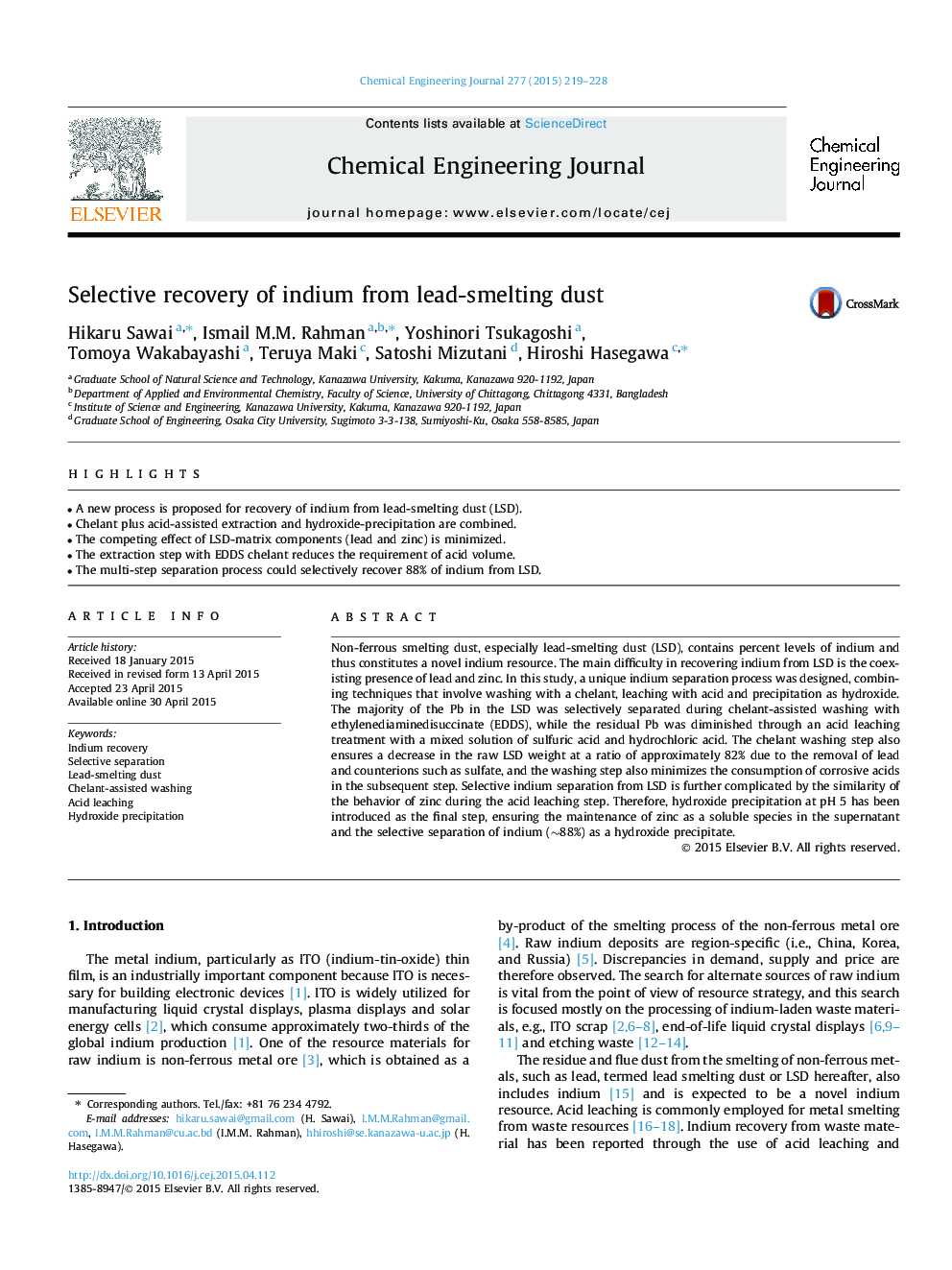| کد مقاله | کد نشریه | سال انتشار | مقاله انگلیسی | نسخه تمام متن |
|---|---|---|---|---|
| 146315 | 456367 | 2015 | 10 صفحه PDF | دانلود رایگان |
• A new process is proposed for recovery of indium from lead-smelting dust (LSD).
• Chelant plus acid-assisted extraction and hydroxide-precipitation are combined.
• The competing effect of LSD-matrix components (lead and zinc) is minimized.
• The extraction step with EDDS chelant reduces the requirement of acid volume.
• The multi-step separation process could selectively recover 88% of indium from LSD.
Non-ferrous smelting dust, especially lead-smelting dust (LSD), contains percent levels of indium and thus constitutes a novel indium resource. The main difficulty in recovering indium from LSD is the coexisting presence of lead and zinc. In this study, a unique indium separation process was designed, combining techniques that involve washing with a chelant, leaching with acid and precipitation as hydroxide. The majority of the Pb in the LSD was selectively separated during chelant-assisted washing with ethylenediaminedisuccinate (EDDS), while the residual Pb was diminished through an acid leaching treatment with a mixed solution of sulfuric acid and hydrochloric acid. The chelant washing step also ensures a decrease in the raw LSD weight at a ratio of approximately 82% due to the removal of lead and counterions such as sulfate, and the washing step also minimizes the consumption of corrosive acids in the subsequent step. Selective indium separation from LSD is further complicated by the similarity of the behavior of zinc during the acid leaching step. Therefore, hydroxide precipitation at pH 5 has been introduced as the final step, ensuring the maintenance of zinc as a soluble species in the supernatant and the selective separation of indium (∼88%) as a hydroxide precipitate.
Journal: Chemical Engineering Journal - Volume 277, 1 October 2015, Pages 219–228
